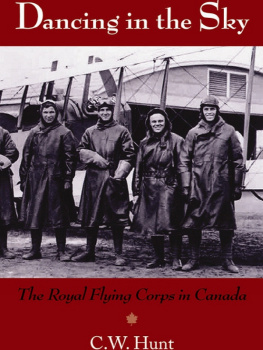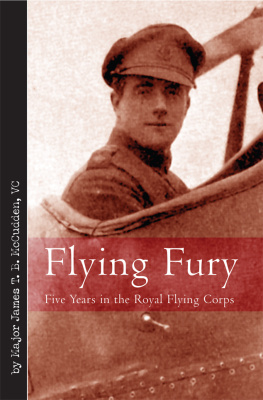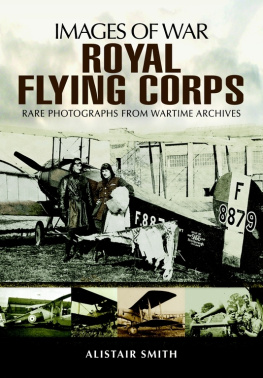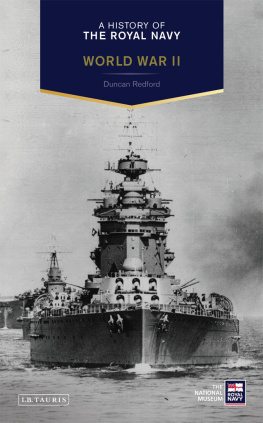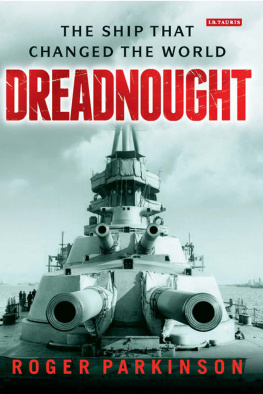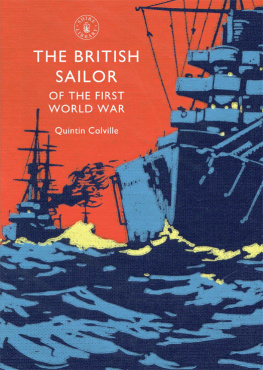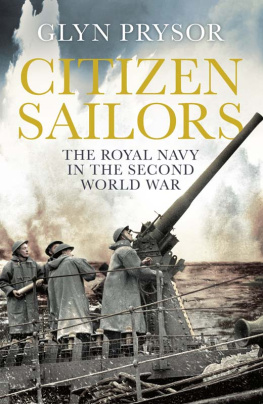Maryam Philpott has a degree in History & Education and an MPhil from Homerton College, University of Cambridge, which examined soldier disillusion on the Western Front 19141918. Her doctoral thesis at Birkbeck College, University of London, UK examined the experience of the Royal Flying Corps and Royal Navy in the Great War.
Maryam worked as an archival researcher for the late Professor Richard Holmes on three of his books: Sahib: The British Soldier in India 17501914 (2006), The World at War: The Landmark Oral History from the Previous Unpublished Archives (2009) and Soldiers: Army Lives and Loyalties from Red Coats to Dusty Warriors (2011). Most recently she worked for William Dalrymple on his forthcoming book The Return of a King: The Battle for Afghanistan (2013).
Maryam currently works at the Innovation and Entrepreneurship Group, Imperial College London.

Published in 2013 by I.B.Tauris & Co Ltd
6 Salem Road, London W2 4BU
175 Fifth Avenue, New York NY 10010
www.ibtauris.com
Distributed in the United States and Canada
Exclusively by Palgrave Macmillan
175 Fifth Avenue, New York NY 10010
Copyright 2013 Maryam Philpott
The right of Maryam Philpott to be identified as the author of this work has been asserted by the author in accordance with the Copyright, Designs and Patent Act 1988.
All rights reserved. Except for brief quotations in a review, this book, or any part thereof, may not be reproduced, stored in or introduced into a retrieval system, or transmitted, in any form or by any means, electronic, mechanical, photocopying, recording or otherwise, without the prior written permission of the publisher.
International Library of War Studies, vol. 19
ISBN 978 1 78076 151 0
eISBN 978 0 85773 332 0
A full CIP record for this book is available from the British Library
A full CIP record for this book is available from the Library of Congress
Library of Congress catalog card: available
Typeset by Newgen Publishers, Chennai
This book is dedicated to the memory of my grandparents Claude and Mary Philpott
ACKNOWLEDGEMENTS
So many people have contributed to the development of this book and it would be impossible to list them all. Some have shared their academic ideas and others provided useful distraction, both of which, at times, were hugely valuable.
My most sincere thanks to my supervisor, Joanna Bourke, who saw the potential in this project many years ago and has been unstinting in her support ever since. Thanks also to David Edgerton for guiding me through the history of technology and providing useful discussion. My colleagues at Imperial College London, first in the Graduate School and then the Innovation & Entrepreneurship Group, have been encouraging throughout and extremely flexible, for which I am most grateful.
Thanks to the people who read chapters, or generously provided useful direction, insight or diversion in London and Cambridge, including Renee Peck, Melanie Woodward, Charlotte Forsyth, Simon Elliston Ball, Catherine Robinson, Philippa Shallard, Kelly Hayes, Duygu Ozcan, Cher Li, Rudi Eliott Lockhart, and Maria Margonis. And thanks, of course, to my family Gillian, Kevin and Laura.
This book could not exist without I.B.Tauris who waited a long time for it to be written but always saw its value. Thanks particularly to Lester Crook and Tomasz Hoskins for their help in its development.
INTRODUCTION
There are no British survivors of the Great War. On 25 July 2009, a turning point in the history of this conflict, the last soldier, Harry Patch, died and the First World War moved permanently into the past. Patch outlived Royal Air Force veteran Henry Allingham by just a week, but it is the experiences of soldiers in 19141918 that have been the historiographic focus. Nearly 700,000 men served in the navy and airforce in this conflict (almost as many as the total British casualties), but their contribution has never been explored. Their knowledge of conflict, encapsulated in the diaries, letters and memoirs of pilots and sailors, reveals the diversity of the war experienced between 1914 and 1918. Unlike war in the trenches, it is jolly nice to land at 10:30 am and feel you are pretty much done for the day, pilot Charles D. Smart noted in his diary in February 1917. Fritz evidently doesnt like working before breakfast, he continued, and I am inclined to agree with him ... a good solid foundation of bacon & eggs makes a good base to work from. The Royal Navy expected to dominate the war and force victory, so the frustration of King-Harman typified the response of sailors who had expected to fight. The Royal Flying Corps (RFC) began the conflict with no significant role, yet the regular patrols over German lines and daily contact with the enemy, recorded by Smart, saw the air force earn a permanent position as Britains third service. Still, it has been the soldier who has dominated the academic and cultural study of warfare. Yet the oldest and youngest services made a significant contribution to eventual victory and both were permanently altered by the events of 19141918.
The Great War retains an emotional hold over modern Britain. From the annual remembrance ceremonies to honour the fallen, through the frequently-quoted poetry of Owen and Sassoon, to representations in popular culture, this conflict continues to fascinate. Whether this is Laurence Binyons promise to always remember, or regret that it happened at all, the experience of soldiers in the trenches had a significant impact on British life, and crucially, its approach to later conflict. Whilst impressing these events onto the national memory, however, hundreds of thousands of men have been left behind. It is estimated that three quarters of a million British servicemen died in the First World War, and there have been almost one hundred years of remembrance, yet in 1918 there were almost as many men serving as pilots and sailors, and they have simply been forgotten.
Without the presence of the Royal Navy and Royal Flying Corps, this would have been a very different conflict. The naval blockade and domination of the North Sea in particular prevented enemy attacks on the British coastline and contributed to the eventual diminution of Germanys resources. The intelligence-gathering of pilots on the Western Front and their aggressive role in Home Defence and long-range bombardment of German industrial centres was vital to British strategy and morale. Superficially these are two very different services; the navy old, hierarchical, centralist and in some ways tired took a defensive role, but was expected to win the war with a decisive battle. Its men were extensively trained to expect glory and to spend their careers as naval personnel. The Royal Flying Corps was young and at the cutting edge of technological development. Its structure, nominally based on the armys, was more relaxed, and men engaged in personnel warfare after a relatively brief training period. In 1914, few expected the Corps to achieve anything, or to become much more than an auxiliary service.
Yet both services were motivated by duty, and both were challenged by the new technologies of twentieth-century warfare. They also shared, like soldiers, an experience of war that limited actual fighting to contained periods, and spent much of their time waiting, which makes them an interesting comparison. Both services had to grapple with prolonged demands for new technology to match German advancement, and faced the challenge of developing effective systems when machinery alone was insufficient to end the war. The extent to which the oldest and newest services were able to do this is an interesting question, and one which this book examines. Was the navy, with its established methods, ingrained service culture and fearsome reputation, better able to meet the demands of combat, or was the fledgling Royal Flying Corps, in its first conflict, with no proven structure or experience, more able to adapt as the war progressed? Both services periodically struggled, failed and succeeded, and by returning them to the story of the First World War, it is possible to understand, in all circumstances, why servicemen continued to fight.


